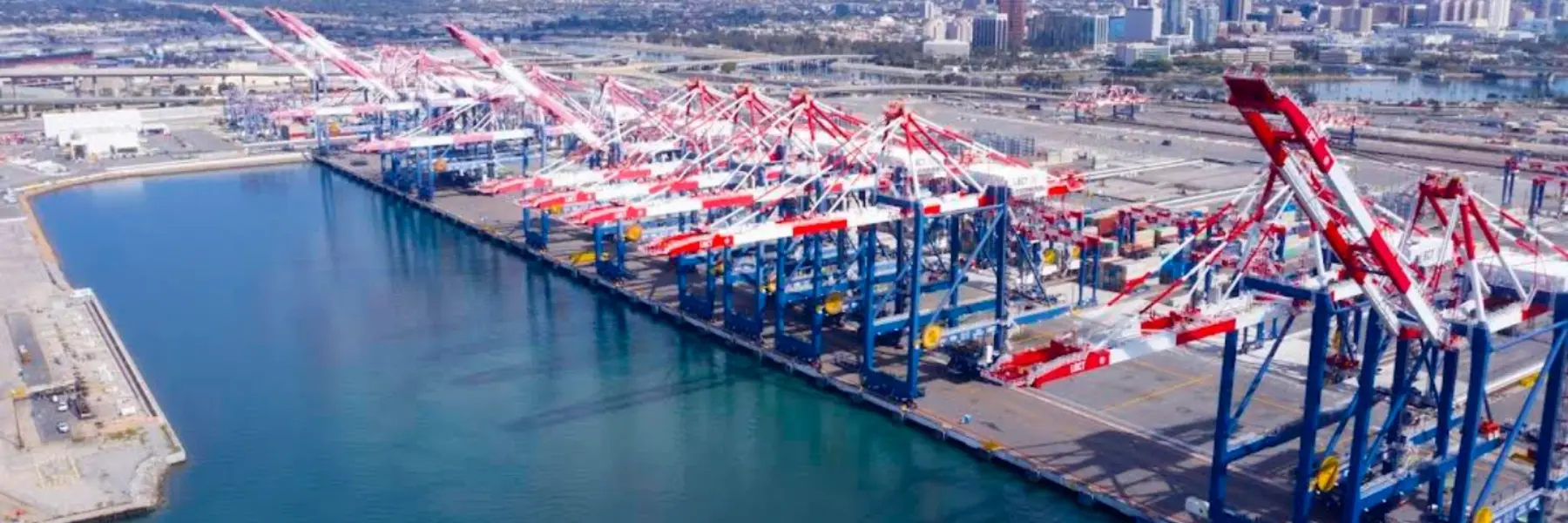Complete Guide to Shipping from China to San Antonio, TX: Rates, Schedules & Customs Tips
As a major economic and cultural hub in South Texas, San Antonio relies on efficient global logistics to support its auto manufacturing, healthcare, tourism, and e-commerce sectors—making shipping from China to San Antonio, TX a critical link for local businesses. Since San Antonio is an inland city, shipments from China typically arrive via Gulf Coast international seaports (Port of Houston, Port of Corpus Christi) or San Antonio International Airport (SAT), requiring seamless inland transport. Understanding the dynamics of Ocean FCL, Ocean LCL, Ocean Freight, Airfreight costs, ship schedules, and customs clearance is key to optimizing your supply chain. Partnering with a trusted China Freight forwarder like WanHaoFreight forwarder simplifies these steps, cutting costs and minimizing delays. This guide covers everything you need to know about shipping from China to San Antonio, TX.
Ocean Freight from China to San Antonio, TX: FCL vs. LCL
Ocean Freight is the most cost-effective choice for bulk shipments to San Antonio, accounting for over 70% of cargo on this route. Cargo first arrives at Gulf Coast international seaports before moving 150–200 miles inland via truck or rail. It’s primarily divided into two modes: Ocean FCL (Full Container Load) and Ocean LCL (Less than Container Load).
Ocean FCL: Ideal for Large-Volume Cargo
Ocean FCL involves booking an entire shipping container exclusively for your goods (10+ cubic meters/CBM), making it perfect for manufacturers importing auto parts, healthcare facilities restocking medical equipment, or retailers moving pallets of inventory. Key advantages include faster transit (no waiting for cargo consolidation), lower risk of damage (goods stay sealed until delivery), and predictable pricing (including inland transport costs).
Rates for Ocean FCL from China to San Antonio depend on three factors: Chinese origin port, U.S. seaport choice, and container size. The most common container sizes are 20-foot (20GP) and 40-foot (40GP/40HQ). From Shanghai Port—one of China’s top international seaports—a 20GP container to the Port of Houston (San Antonio’s closest major seaport) ranges from $1,800–$2,600, plus $250–$400 for truck transport to San Antonio (a 3-hour drive). A 40HQ (high cube, offering extra vertical space) costs $2,300–$3,300, plus $350–$500 for inland transit. From Shenzhen Port (another major international seaport), ocean rates are $120–$280 cheaper, but inland costs remain consistent. Seasonal peaks (April–July, ahead of back-to-school and holiday shipping) raise ocean rates by 20–30%, while off-peak months (December–February) offer savings of 10–15%.
WanHaoFreight forwarder specializes in Ocean FCL solutions for shipping from China to San Antonio. Their team negotiates with Gulf Coast-focused carriers (Maersk, CMA CGM, COSCO) to secure competitive seaport rates and partners with regional U.S. trucking firms for expedited inland transport—critical for time-sensitive auto or medical shipments. For businesses with regular shipments, WanHaoFreight also offers long-term contracts to lock in combined ocean-inland costs, reducing budget uncertainty.
Ocean LCL: Cost-Saving for Smaller Shipments
If your cargo is less than 10 CBM (e.g., small batches of e-commerce goods, office supplies, or prototype parts), Ocean LCL is the optimal choice. With Ocean LCL, your goods are consolidated with other shippers’ cargo in a single container, spreading the overall cost across multiple parties. This makes it far more affordable than FCL for small-scale shipping from China.
Ocean LCL rates from China to San Antonio are calculated based on chargeable weight (whichever is higher: actual weight or volume weight). From Guangzhou Port (a key hub for China Freight forwarder services), rates to the Port of Corpus Christi (a smaller Gulf Coast port with faster inland access to San Antonio) are $80–$120 per CBM, plus $200–$350 for inland trucking to San Antonio (a 2.5-hour drive). For example, shipping 5 CBM of tourism-related goods (e.g., souvenirs, hotel supplies) from Guangzhou to San Antonio would cost $400–$600 (ocean) + $200–$350 (inland) = $600–$950. Additional fees may apply, including consolidation fees ($50–$90), documentation fees ($30–$50), and seaport handling charges ($75–$105). Unlike many freight forwarders, WanHaoFreight provides transparent, all-inclusive quotes—ensuring you won’t face hidden inland or handling surcharges later.
Transit time for Ocean LCL is 28–36 days (22–28 days ocean + 4–8 days inland), compared to 24–30 days for FCL. If time isn’t a critical factor, LCL is ideal for budget-conscious small businesses or e-commerce sellers engaged in shipping from China to San Antonio.
Ocean Freight Schedules: Navigating China to San Antonio Routes
Ship schedules to San Antonio depend on the chosen U.S. seaport, with most carriers offering weekly sailings from major Chinese ports to the Port of Houston and bi-weekly sailings to the Port of Corpus Christi—ensuring consistent cargo flow.
From Shanghai to the Port of Houston: Carriers like Hapag-Lloyd offer weekly sailings via the Panama Canal, with a 22–26 day ocean transit time. Adding 2–3 days for inland trucking to San Antonio brings the total transit time to 24–29 days. From Shenzhen to the Port of Houston: Weekly sailings take 24–28 days ocean + 2–3 days inland (total 26–31 days).
From Shanghai to the Port of Corpus Christi: Bi-weekly sailings take 24–28 days ocean, plus 1.5–2.5 days for inland trucking to San Antonio (total 25–30 days). Rates here are $100–$200 higher than the Port of Houston, but the shorter inland transit makes it ideal for time-sensitive LCL shipments.
Weather and port congestion are key considerations: Hurricane season (June–November) in the Gulf of Mexico can delay Gulf Coast-bound shipments by 3–7 days, while peak shipping seasons (April–July) may cause congestion in Chinese ports, adding 2–4 days to transit times. WanHaoFreight forwarder provides real-time ship tracking for both ocean and inland stages, allowing you to monitor your cargo’s progress and adjust production or inventory plans if needed. To secure your preferred sailing, it’s recommended to book 3–4 weeks in advance—especially during peak seasons.
Airfreight from China to San Antonio, TX: Speed for Urgent Cargo
While Ocean Freight is cost-effective, Airfreight is the go-to option for urgent, high-value, or perishable goods (e.g., medical supplies, auto manufacturing parts, or time-sensitive tourism inventory) to San Antonio. Cargo flies directly to San Antonio International Airport (SAT) or major hubs like Austin-Bergstrom International Airport (AUS) before short inland transport.
Airfreight Rates & Transit Time
Airfreight rates are higher than Ocean Freight but offer unmatched speed. Rates from major Chinese airports (Beijing Capital, Shanghai Pudong, Guangzhou Baiyun) to SAT depend on weight and flight type. Direct cargo flights from Shanghai Pudong to SAT (14–16 hours) cost $4.00–$6.50 per kilogram. Non-direct flights (via Houston’s George Bush Intercontinental Airport, IAH) cost $3.20–$5.50 per kilogram but add 1–2 days to the total transit time. For example, shipping 120kg of medical devices from Shanghai Pudong to San Antonio would cost $480–$780 (direct airfare) or $384–$660 (non-direct), plus $40–$80 for local delivery within San Antonio.
Transit time for direct Airfreight is 3–5 business days (flight + customs clearance + local delivery). Non-direct Airfreight takes 5–7 business days but offers cost savings for less urgent cargo. WanHaoFreight forwarder partners with airlines that serve South Texas (Delta, China Southern, United) to secure priority cargo space—critical during peak demand periods, such as when San Antonio’s auto plants need emergency parts or hospitals require urgent medical supplies. They also offer door-to-door Airfreight service, covering everything from cargo pickup at your Chinese warehouse to final delivery at your San Antonio facility.
Customs Clearance for San Antonio-Bound Cargo
Customs clearance for San Antonio shipments occurs at the port of entry (Port of Houston/Port of Corpus Christi for Ocean Freight, SAT/IAH for Airfreight) and is managed by U.S. Customs and Border Protection (CBP). Non-compliance can lead to delays, fines, or even seizure of your cargo—here’s what you need to know to ensure a smooth process:
Required Documentation
WanHaoFreight forwarder helps you prepare and review all these documents to avoid errors. For example, incorrect HS codes can lead to misclassification and higher tariffs—their team has expertise in San Antonio’s key industries and ensures your goods are coded accurately.
Tariffs & Duties
Tariffs on goods shipped from China to San Antonio depend on the product’s HS code. The U.S. currently maintains tariffs on certain Chinese goods, so it’s important to check the latest rates on the CBP website or with your freight forwarder. Examples relevant to San Antonio’s economy include:
Duties are calculated as a percentage of the goods’ FOB value (Free On Board). San Antonio has no local import taxes, but Texas state sales tax (6.25%) applies to goods sold within the state. WanHaoFreight can help you navigate these tax rules to avoid overpayment and assists with duty drawback programs—if you re-export goods from San Antonio (e.g., to Mexico), you may be eligible for a refund of duties paid.
Compliance Checks
CBP conducts random inspections of cargo arriving in San Antonio-bound ports, but certain goods are more likely to be inspected (e.g., medical supplies, electronics, and food products). To avoid delays, ensure your goods comply with U.S. safety standards:
WanHaoFreight forwarder partners with third-party testing labs in China to verify compliance before shipping, reducing the risk of inspection-related hold-ups by 40–50%.
How to Choose the Right Freight Forwarder for Shipping from China to San Antonio
With countless freight forwarders available, selecting the right one for shipping from China to San Antonio requires focusing on regional expertise and end-to-end support. Here’s why WanHaoFreight forwarder stands out:
Expertise in China-San Antonio Routes
WanHaoFreight has over a decade of experience shipping to San Antonio, with a team that understands the nuances of South Texas logistics—including seaport selection (Port of Houston vs. Corpus Christi), inland transport networks, and San Antonio’s industry-specific needs. They know how to navigate potential challenges, such as Gulf Coast weather delays or auto sector peak demand, to keep your cargo on track.
Transparent Pricing & Easy Get A Quote Process
Hidden fees are a common frustration in the shipping industry. WanHaoFreight offers a user-friendly “Get A Quote” tool on their website, where you can input your cargo details (size, weight, origin/destination, and urgency) and receive a personalized, all-inclusive quote within 24 hours. The quote breaks down ocean/air costs, inland transport, and customs fees—no surprises or last-minute add-ons.
Full-Service Support
From booking to final delivery, WanHaoFreight handles every step of the shipping process: warehouse storage in China, cargo insurance (to protect against damage or loss), customs clearance, and last-mile delivery in San Antonio. Whether you need Ocean FCL, Ocean LCL, or Airfreight, their team provides dedicated support to ensure your shipment arrives on time and within budget.
Conclusion
Shipping from China to San Antonio, TX doesn’t have to be complicated—with the right knowledge and a trusted freight forwarder like WanHaoFreight, you can optimize costs, meet tight deadlines, and avoid customs-related headaches. Whether you choose Ocean FCL for bulk cargo, Ocean LCL for small shipments, or Airfreight for urgent goods, understanding rates, schedules, and compliance requirements is key. And with WanHaoFreight’s expertise in China-San Antonio routes, transparent pricing, and easy “Get A Quote” process, you can focus on growing your business while they handle the logistics. Ready to get started? Contact WanHaoFreight today to receive your personalized shipping solution for China to San Antonio, TX.
 Easy Shipping From Global, Save Cost
Easy Shipping From Global, Save Cost















